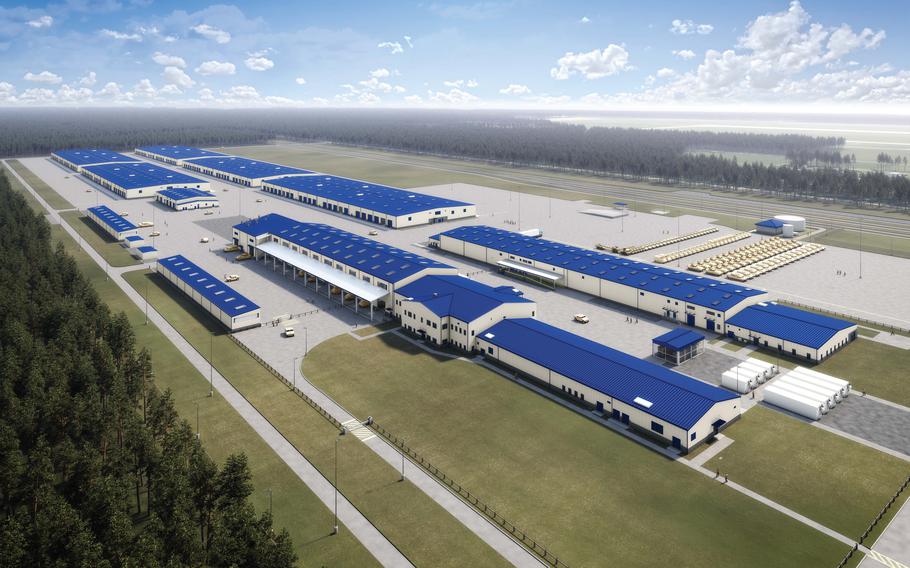
U.S. soldiers operate an M1A2 Abrams tank during an exercise in Bemowo Piskie, Poland, on Feb. 16, 2023. (John Schoebel/U.S. Army)
Poland wants to see larger stockpiles of U.S. weaponry on its soil, which would allow allies to respond faster in a crisis, the country’s head of state said this week.
President Andrzej Duda said in an interview Wednesday on Polish television that he had brought up the issue with his American counterpart, Joe Biden, during talks in Warsaw.
Duda asked that Army equipment and weapons be moved “to places created especially in Poland in order to strengthen the potential of the American presence in terms of infrastructure.”
“My proposal was received with great attention,” he said on national broadcaster TVN24.
Biden’s two-day visit to Warsaw concluded Wednesday with a meeting between leaders of Poland and other NATO countries on the alliance’s eastern flank for discussions about regional security.
Since Russia’s full-scale invasion of Ukraine one year ago, the number of American troops operating out of Poland has been on the rise. About 10,000 U.S. service members are now carrying out missions to the country on a rotational basis.
But even before the invasion, Poland had emerged as a center of gravity for the U.S. military in Europe, where several thousand troops have been positioned on a steady basis since 2014.
Duda’s comments about a desire for more military equipment come as allies near completion on a major weapons depot in Powidz, which now functions as a logistical hub in Poland for the Pentagon.
As early as this spring, a new Army pre-positioned stock site is expected to open after years of construction. It is one of the largest NATO-funded infrastructure initiatives in decades.
The site covers more than 650,000 square feet of warehouse space, which is expected to eventually be filled with battle tanks, armored combat vehicles and artillery.

A 2021 digital rendering shows plans for the Army's pre-positioned stock site in Powidz, Poland. The facility is slated to open this year and offers 650,000 square feet of warehouse space for battle tanks, armored combat vehicles and artillery. (U.S. Army)
The Army began setting up various weapons depots around Europe following Russia’s aggression in Ukraine in 2014, resulting in the occupation and illegal annexation of the Crimean Peninsula.
The purpose of the depots was to have ready-to-use combat gear in places that U.S. soldiers could quickly man in a crisis.
During his discussions with Biden, Duda said the two leaders also spoke about the need for detailing procedures for deploying forces to the eastern front in crisis scenarios.
“The point is that there should be designated units from the U.S. that will come to help in case of need,” Duda said.
Such units also need to be designated within the rest of the alliance, he added.
NATO is expected to refine regional defense plans for how units will mobilize to reinforce the eastern flank, when heads of state gather this summer for a summit in Vilnius, Lithuania.